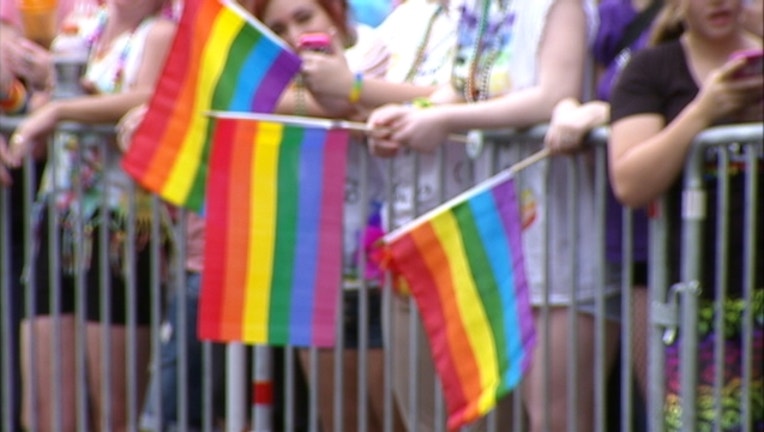LGBT history lessons heading for California classrooms

SAN FRANCISCO - In second grade, California students will learn about families with two moms or two dads. Two years later, while studying how immigrants have shaped the Golden State, they will hear how New York native Harvey Milk became a pioneering gay politician in San Francisco.
The State Board of Education unanimously approved those changes in classroom instruction Thursday to comply with the nation's first law requiring public schools to include prominent gay Americans and LGBT rights milestones in history classes.
The updates are part of a broader overhaul of California's history and social science curriculum. During four hours of public testimony, dozens of speakers criticized the way the framework discusses Muslims, Hindus, Jews and Japan's use of "comfort women" during World War II, but no one objected to the inclusion of lesbian, gay, bisexual and transgender rights.
Allyson Chiu, who just finished 11th grade at Cupertino High School, said the revisions would make LGBT students more comfortable. She and seven others spoke in favor of how the guidelines address gay issues.
"My classmates can solve quadratic equations or cite the elements on the periodic table. They can't tell you who Harvey Milk was or the significance of the Stonewall Riots," Chiu said.
The changes satisfy legislation passed five years ago that added LGBT Americans and people with disabilities to the list of social and ethnic groups whose contributions schools are supposed to teach and must appear in K-8 textbooks.
The law also prohibited classroom materials that reflect adversely on gays or particular religions. Conservative opponents argued that it should be up to parents to decide how and at what age to broach sexual orientation with their children and made two unsuccessful efforts to repeal the law.
The approved framework weaves references to gay Americans and events throughout the history and social science curriculum, starting in second grade through discussions about diverse families and again in fourth grade with lessons on California's place in the gay rights movement.
The guidelines also touch on the topics in fifth and eighth grade — looking at gender roles in the 18th and 19th centuries and examples of individuals who flouted them — and throughout high school.
A capstone of sorts would come in U.S. government courses, where seniors would learn about the 2015 Supreme Court ruling that legalized same-sex marriage nationwide and recent court cases involving bathroom access for transgender students.
California's law took effect in January 2012, but its implementation was slowed by attempts to overturn it, competing educational priorities and budget cuts that stalled work on drafting recommendations for the school board and textbook purchases.
Opponents remain concerned that the guidelines de-emphasize important historical figures and events to make room for LGBT icons of lesser or disputed note, said Pacific Justice Institute senior staff attorney Matthew McReynolds, whose Sacramento legal defense organization was involved in the repeal efforts.
"Certainly some families will be concerned about their second-graders learning about two-mom families, but I think parents would be much more alarmed if they knew that LGBT History Month, in the last few years, has promoted the notion that 'America the Beautiful' is a source of lesbian pride," McReynolds said.
Katharine Lee Bates, a Wellesley College professor who wrote the song in 1893, lived with a fellow faculty member at the women's school for a quarter-century, and contemporary scholars speculate that the relationship was romantic.
Supporters say the changes recognize that LGBT history is part of American history.
"You cannot understand where we are now collectively as Americans without understanding something of the LGBT past," said Don Romesburg, chairman of women's studies at Sonoma State University.

